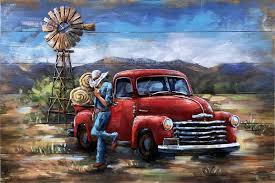Painting is one of the most ancient and revered forms of artistic expression, offering a vibrant tapestry of colors, shapes, and emotions. From the prehistoric cave paintings of Lascaux to contemporary masterpieces, schilderij has continuously evolved, reflecting the diverse cultures, philosophies, and technologies of its time.
A Brief History of Painting
1. Prehistoric and Ancient Painting
The earliest known paintings are found in the caves of Lascaux and Chauvet in France, dating back to around 15,000-30,000 BCE. These works, created using natural pigments, depict animals and abstract symbols and are believed to have had ceremonial or symbolic significance. Ancient Egyptian, Greek, and Roman paintings also hold historical importance, showcasing the evolution of techniques and subject matter from religious iconography to realistic portraits and landscapes.
2. The Renaissance: A Revival of Techniques
The Renaissance (14th-17th centuries) marked a profound transformation in painting. Artists like Leonardo da Vinci, Michelangelo, and Raphael pushed the boundaries of realism, introducing techniques such as linear perspective, chiaroscuro (the treatment of light and shadow), and sfumato (the blending of colors). This period celebrated humanism and the natural world, producing some of the most iconic works in art history, including da Vinci’s “Mona Lisa” and Michelangelo’s “The Creation of Adam.”
3. Baroque to Romanticism: Emotions and Movement
The Baroque period (17th century) brought dramatic contrasts and emotional intensity to painting. Artists such as Caravaggio and Rembrandt used light and shadow to create dynamic compositions and convey deep emotional narratives. The subsequent Romantic period (late 18th-early 19th centuries) shifted focus to individual expression and the sublime beauty of nature, exemplified by painters like Turner and Delacroix.
4. Modern and Contemporary Art: Breaking Boundaries
The 19th and 20th centuries witnessed an explosion of diverse styles and movements. Impressionism, with its emphasis on light and color, was championed by artists like Claude Monet and Edgar Degas. Post-Impressionists such as Vincent van Gogh and Paul Gauguin pushed further into abstraction and personal expression. The 20th century saw the rise of movements like Cubism, Surrealism, and Abstract Expressionism, with influential figures like Pablo Picasso, Salvador Dalí, and Jackson Pollock reshaping the way we perceive art.
Techniques and Mediums
Painting techniques and mediums have evolved dramatically over the centuries. Traditional methods include:
- Oil Painting: Developed during the Renaissance, oil paints allow for rich colors, intricate details, and the manipulation of textures. They dry slowly, giving artists time to blend and layer colors.
- Watercolor: Known for its transparency and fluidity, watercolor painting involves pigments suspended in a water-soluble binder. It is often used for its delicate effects and ease of use.
- Acrylics: A modern medium that dries quickly and can mimic both oil and watercolor effects. Acrylic paints are versatile and can be used on a variety of surfaces.
- Fresco: A technique where pigments are applied to wet plaster, allowing the painting to become an integral part of the wall surface. It was widely used during the Renaissance for murals.
The Role of Painting Today
In contemporary times, painting remains a vital form of artistic expression. Artists continue to experiment with new materials, techniques, and themes, reflecting contemporary issues and personal experiences. Modern art challenges traditional boundaries and invites viewers to engage with art in novel ways, whether through interactive installations or digital mediums.
Painting is more than just an artistic practice; it is a reflection of human culture, emotion, and innovation. It allows us to explore and interpret our world, offering insight into different perspectives and experiences. As we continue to advance technologically and socially, painting will undoubtedly adapt and thrive, continuing to inspire and captivate future generations.

